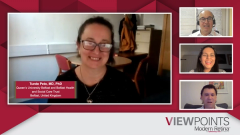
Age-Related Macular Degeneration: Treatment Overview
An overview of the current treatment landscape for age-related macular degeneration and factors that impact treatment selection.
Episodes in this series

Albert J. Augustin, MD: I would like to move forward to the treatment of those diseases. I would like to review the current treatment landscape firstly for the management of AMD [age-related macular degeneration]. Dr. Peto, could you say a few words on patient factors which influence our treatment strategy when we consider [a] specific agent?
Tunde Peto, MD, PhD: Several countries have different legal allowances as to which drug you can use. It is very important that people stay within their legal framework and what has been registered in their own countries. In several countries, we have 2 or 3 drugs available for treating age-related macular degeneration. Which one you start with tends to be somewhere between personal preference or what your system allows you to do. We always need to think about the vision, potential outcomes, and potential comorbidities. If the patient has just had a stroke or heart attack, we might not be able to treat them with the agent of choice. We also need to think about how many times the patient would be able to come back to clinic. All of these need to be discussed right at the beginning, because we are likely to see the patient very often in the first year of treatment at least. We must tell them that we do not really fully understand as to who will respond very well to treatment and who might have slightly less treatment frequency in the second and third year, while others may require very frequent injections for the duration of the disease. We might have to also tell them that their vision might be going up and down depending on if they might have a hemorrhage. It is important that we warn them about all of the complications of the disease as well.
Transcript edited for clarity.
Newsletter
Get the essential updates shaping the future of pharma manufacturing and compliance—subscribe today to Pharmaceutical Technology and never miss a breakthrough.









